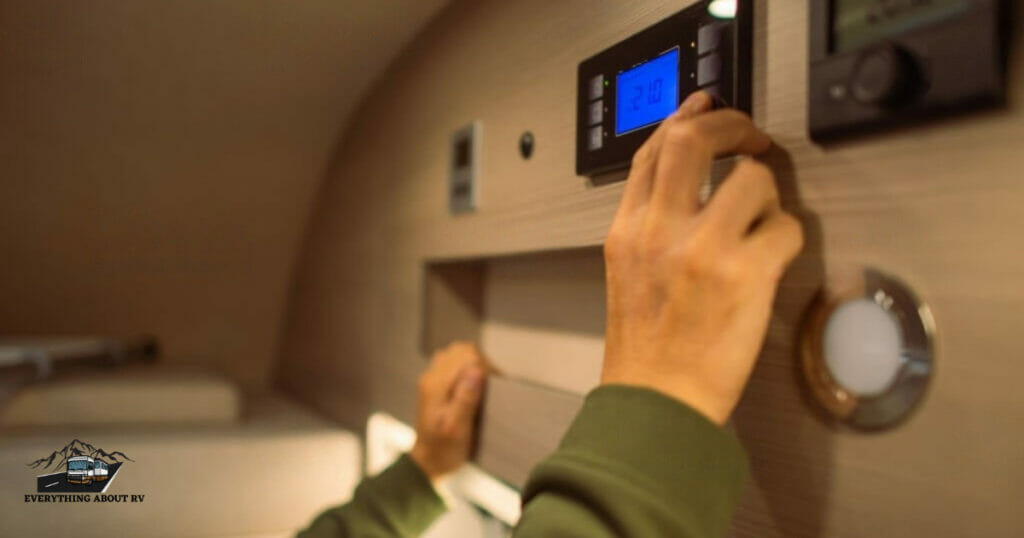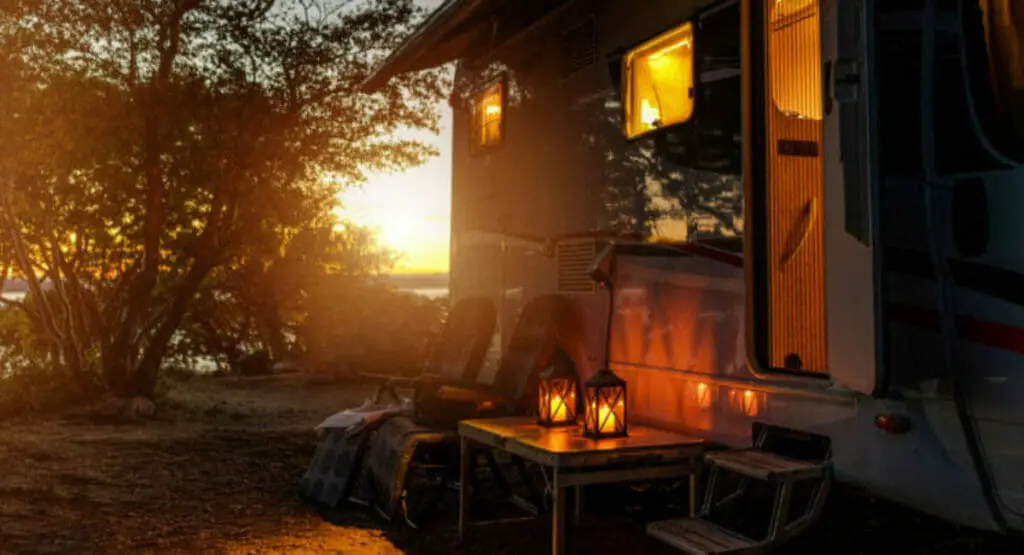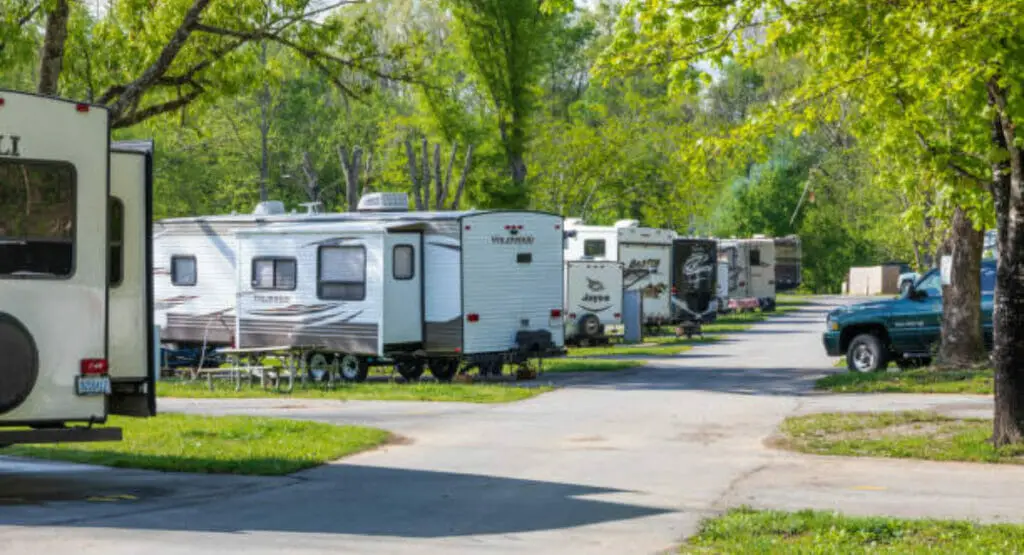Can you run RV ac off battery? RVs are a convenient way to travel and enjoy the great outdoors, but what about cooling your RV when you’re not connected to shore power? In this blog post, we’ll look into running an RV air conditioner on battery power. We’ll go over the factors to consider, step-by-step instructions for installing it, and the benefits and drawbacks of using battery-powered air conditioning.
I. Can You Run an RV AC off Battery?
A. Investigating the Possibility:
It is possible to run an RV air conditioner on battery power. Because of technological advancements, it is now possible to power various appliances, including air conditioning units, with batteries. While the initial setup may necessitate some investment and planning, it opens the door to off-grid camping and increased mobility.
B. Things to Think About:
Before attempting to run an RV air conditioner on battery power, several factors must be considered:
1. Power Requirements: The power requirements of RV air conditioners vary and are typically measured in watts or amperage. To ensure that your battery setup can handle the load, you must first determine the power draw of your specific AC unit.
2. Battery Capacity: The capacity of your battery bank determines how long your air conditioner can run. Deep cycle batteries with a high capacity are recommended for their ability to provide continuous power over long periods of time.
3. Inverter Selection: An inverter is required to convert the direct current (DC) power from your batteries to the alternating current (AC) power required by the air conditioner. Choosing the right inverter to handle your AC unit’s power demand is critical for optimal performance.
4. Energy Consumption: Using a battery-powered air conditioner consumes a significant amount of energy. Monitoring your power consumption and being aware of other power-consuming devices in your RV will help keep your batteries from draining too quickly.
5. Temperature Control: It is critical to consider the outside temperature as well as the cooling capacity of your air conditioner. Extremely hot weather may necessitate more power to keep your RV at a comfortable temperature.
You can determine the feasibility of running your RV air conditioner off battery power and plan accordingly for an efficient setup by carefully considering these factors and taking the necessary precautions.
II. Steps to Run an RV AC on Battery Power
Step 1: Assess Your Power Requirements:
Start by assessing the power requirements of your RV air conditioner. Refer to the manufacturer’s specifications to determine the wattage or amperage needed to run your AC unit effectively. This information will help you choose the appropriate battery setup.
Step 2: Choose the Right Battery Setup:
Invest in high-capacity deep-cycle batteries designed for long-lasting power. Consider the power requirements of your AC unit and the duration you expect to run it on battery power. Based on these factors, determine the number of batteries you’ll need for your setup.
Step 3: Install an Inverter:
An inverter is essential for converting the DC power from your batteries into the AC power required by your RV air conditioner. Select a reliable inverter that can handle the power demand of your AC unit. Follow the manufacturer’s instructions for proper installation, ensuring secure connections and adequate ventilation.
Step 4: Connect the RV AC to the Battery System:
Connect your RV air conditioner to the battery system via the inverter. Use appropriately sized cables and connectors to ensure efficient power transfer and minimize power loss. Double-check all connections to ensure they are secure and properly insulated.
Step 5: Monitor Power Consumption:
It’s important to monitor the power consumption of your RV air conditioner to avoid draining your batteries excessively. Keep track of your battery’s voltage using a battery monitor or voltmeter. Consider using a dedicated energy monitoring system to accurately measure the power drawn by your AC unit.
Step 6: Optimize Energy Efficiency:
To maximize the efficiency of running your RV AC on battery power, implement energy-saving measures. Insulate your RV to minimize heat transfer, close curtains or blinds during the hottest parts of the day, and consider using fans or portable cooling units to supplement the air conditioner. Use the AC unit sparingly and adjust the temperature settings to maintain a comfortable environment while conserving power.
By following these steps, you can successfully set up and run your RV air conditioner on battery power. Remember to prioritize safety, regularly monitor your battery levels, and optimize energy usage to ensure a comfortable and sustainable cooling experience during your travels.
III. Pros and Cons of Running RV AC on Battery
A. Benefits of RV Battery Air Conditioning:
1. Flexibility and mobility: Battery-powered RV air conditioning allows you to camp off-grid or in areas where there is no access to shore power. You can travel to remote locations while still staying cool and comfortable inside your RV.
2. Quiet Operation: Unlike generator-powered air conditioning, battery-powered systems run quietly, allowing you to enjoy a peaceful camping experience without the noise and vibrations that come with traditional generators.
3. Energy Independence: Using battery power for air conditioning reduces your reliance on external power sources. This independence is especially useful during power outages or when staying in locations where connecting to shore power is either impossible or inconvenient.
4. Environmental friendliness: Because battery-powered air conditioning emits no emissions, it is a more environmentally friendly alternative to generator-powered systems. You can help make camping cleaner and more sustainable by reducing your use of fossil fuels.
B. Limitations and Obstacles:
1. Runtime is Limited: The runtime of an RV air conditioner powered by batteries is limited by the capacity of your battery bank. Depending on your battery configuration and power requirements, you could have several hours to several days of cooling before the batteries need to be recharged.
2. Constraints on Battery Capacity: To run an air conditioner, you need a large battery capacity, which can be expensive and requires installation space. Depending on your power requirements, you may require multiple batteries, which increases your overall weight and reduces the available storage space in your RV.
3. Regular battery maintenance: Battery maintenance is essential for optimal performance. Regular inspections, monitoring, and periodic recharging are necessary to ensure the longevity and efficiency of your battery bank. Neglecting battery maintenance can lead to reduced capacity and a shortened lifespan.
4. Temperature Restrictions: Extreme heat or high ambient temperatures can strain battery performance and reduce the air conditioner’s overall runtime. In extremely hot weather, maintaining a comfortable temperature inside your RV solely on battery power may be difficult.
Understanding these advantages and disadvantages will allow you to make an informed decision about whether running your RV air conditioner on battery power is appropriate for your specific camping needs and preferences. Before implementing this setup in your RV, consider your power requirements, battery capacity, and the limitations of battery-powered systems.
Conclusion
While it is possible to run an RV air conditioner on battery power, it requires careful planning, the proper equipment, and consideration of your power requirements. You can enjoy the benefits of battery-powered air conditioning in your RV by following the steps outlined in this guide. Remember to consider the pros and cons before deciding whether this setup is appropriate for your camping adventures.
Please keep in mind that the suggested blog post above provides a structured outline for creating a detailed blog post. Each section’s content can be expanded to meet the length and depth requirements for the final blog post.



